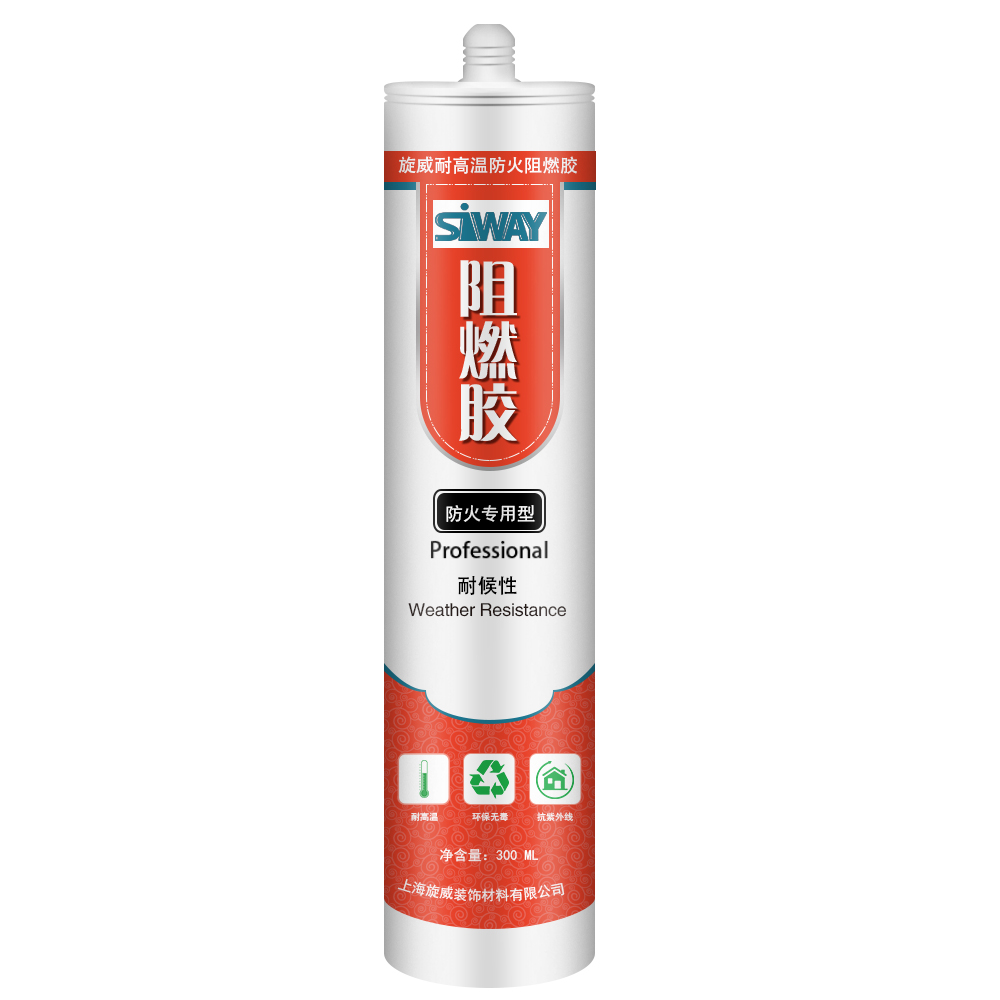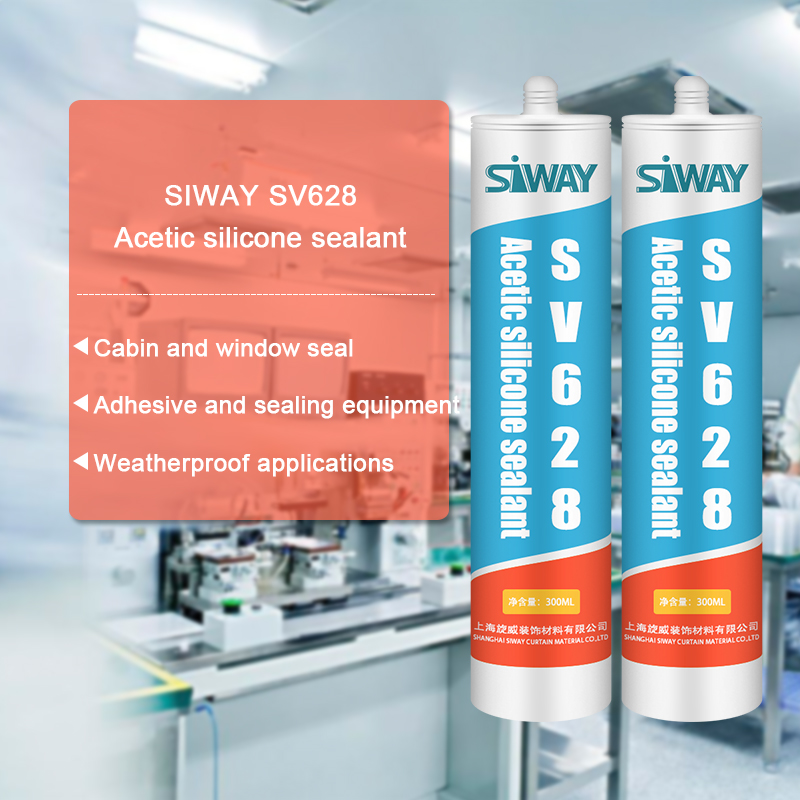Factory best selling SV-9300 Fire Resistant Silicone Sealant for Latvia Manufacturers
Short Description:
Description SV – 9300 Fire resistant silicone sealant is a one-component, neutral-curing silicone sealant exhibiting superior performance in applications where sealing openings in walls and floors are needed to control the spread of fire, smoke, toxic gasses, and water during fire conditions. Where to use It is an ideal material designed for use in fire-stop systems for through penetrations and joints. This product excels in applications where greater water resistance is required e.g. ...
All we do is always associated with our tenet " Customer first, Trust first, devoting on the food packaging and environmental protection for Factory best selling SV-9300 Fire Resistant Silicone Sealant for Latvia Manufacturers, We sincerely welcome you come to visit us. Hope we have good cooperation in the future.
Description
SV – 9300 Fire resistant silicone sealant is a one-component, neutral-curing silicone sealant exhibiting superior performance in applications where sealing openings in walls and floors are needed to control the spread of fire, smoke, toxic gasses, and water during fire conditions.
Where to use
It is an ideal material designed for use in fire-stop systems for through penetrations and joints. This product excels in applications where greater water resistance is required e.g. curtain wall, building facade, expansion/pipe and cable joints.
Key Features
1. 100% silicone
2. Excellent weatherproofing and waterproofing
3. Low gas transmission rate
4. With highly efficient redundant
Basic Application
- Building fire seam sealed
- Building facade
- cable joints
Technical data sheet
| Test standard | Test project | Unit | value |
| Before curing——25℃,50%R.H. | |||
| GB13477 | Flow, sagging or vertical flow | mm | 0 |
| GB13477 | Operating time | min | 15 |
| GB13477 | surface drying time(25℃,50%R.H.) | min | 40-60 |
| Sealant curing speed and operating time will have different with different temperatures and temperature, high temperature and high humidity can make sealant curing speed faster, rather low temperature and low humidity are slower.21 days after curing——25℃,50%R.H. | |||
| GB/T 531.1-2008 | Durometer Hardness | Shore A | 20-60 |
| GB13477 | 60% elongation of cementation | no damaging | |
| GB13477 | Elongation limit | % | 120 |
| GB/T 24267 | Sealant level | 20HM | |
| GB/T 24267 | Fire prevention level | FV-0 | |
Certification
GB/T 24267-2009
Color
Black
Package
300ml in cartridge * 24 per box
Shelf life
12 months
Note
If you want the TDS or MSDS or other details, please contact with our sales person.
Please share this video https://youtu.be/vodSiLtg_Bw
For more great information about water treatment, subscribe! https://www.youtube.com/user/WaterStoreMidland
Follow me
https://www.facebook.com/TheWaterFilterEstore/
https://twitter.com/FilterEstore
https://www.linkedin.com/company/the-water-filter-estore/
or email info@TheWaterFilterEstore.com or info@TheWaterStoreMidland.com
Check out our online store at https//www.TheWaterFilterEstore.com or our full service store in Midland, Ontario at https//www.TheWaterStoreMidland.com
Would you like to know a plumbers secret? Clear Plumbers Silicone Grease will make servicing your water treatment equipment easier, faster and will save your family money! Often you will hear that using Vaseline on seals will make them work better, but that product will actually shorten the life of rubber seals because it is a petroleum based product. Plumbers Grease is silicone based so it actually makes the seals last longer. By making the surfaces slide when closing a filter housing or any other surface coming into contact with the lubricated o ring it keeps the o ring from stretching which will shorten its life. This grease makes a coating on the o ring which means you do not need to apply as much force to get it to seal, which is a good thing especially when it comes time to open up that housing to replace the filter or other maintenance.
To use the grease just make sure the surfaces are dry and then spread a thin layer over the o ring and tighten up just enough so it does not leak. This silicone grease is perfect for lubricating o rings on most Ultraviolet Systems too, just do not lubricate an o ring that is used for a friction fit to suspend a quartz sleeve as it could allow it to slide out!
Please share this video https://youtu.be/vodSiLtg_Bw
For more great information about water treatment, subscribe! https://www.youtube.com/user/WaterStoreMidland
https://thewaterfilterestore.com/products/guards-ro-leak-stop-ls1414kad?variant=18028714371
Follow me
https://www.facebook.com/TheWaterFilterEstore/
https://twitter.com/FilterEstore
https://www.linkedin.com/company/the-water-filter-estore
or email info@TheWaterFilterEstore.com or info@TheWaterStoreMidland.com
Check out our online store at TheWaterFilterEstore.com or our full service store in Midland, Ontario at TheWaterStoreMidland.com
Please comment or ask questions below.
Other related videos:
How to strip and repair tap gland-seal
How to stop a monobloc tap outlet leaking (emergency repair)
Earlier today I noticed some water on the floor near the kitchen sink so opened the unit and saw a bit of a leak from the main stopcock that controls flow of water from rising main into the house. Water was dripping from the gland seal. Unfortunately since this is the main way of turning off the water supply* I couldn’t isolate the actual stopcock which ironically is the isolating valve for the cold water supply. So as this was an emergency repair I had to use PTFE tape which is a product that everyone should have in their toolkit.
Anyway – to carry out emergency repair;
Turn off the stopcock and remove handle by unscrewing the cross-head screw in the end of shaft.
Loosen off the gland seal retainer collar. The leak will worsen so put some old rags around it to mop up spills.
Try to extract the old gland packing which is either rubber, fibre or leather. If the tap is in awkward place or the old seal is rock hard and too tight to remove, you then have to wrap several turns of PTFE tape around the shaft as near to the gland seal as possible.
Now using a flat screwdriver and carefully push the tape right down into the gland seal (or what’s left of it)
Now install the gland seal retainer collar and tighten it up.
Now turn on the stopcock or tap/faucet and check for leaks. Ideally the old seal/packing is removed first but in the real world that sometimes doesn’t happen. If there’s still no leaks after a few hours then chances are you’ve fixed the problem. This is a ‘temporary repair’ so ultimately you will have to fit a new stopcock/tap/valve at some point. A useful tip is to regularly cycle any water supply valves, taps etc fully open and closed to keep them from sticking open or shut. Do this twice a year. Taps tend to seize more when they are fully open so it’s good practice to open them fully then back them off half a turn so the internal valve seat isn’t hard against the end stops.
*If the main water supply stop valve is leaking you’ll either need a pipe freezing kit or hope there is a main water supply cut-off along with the water meter or supply from the mains water. Worth making a note of where the stopcocks and other valves are located on your property.






